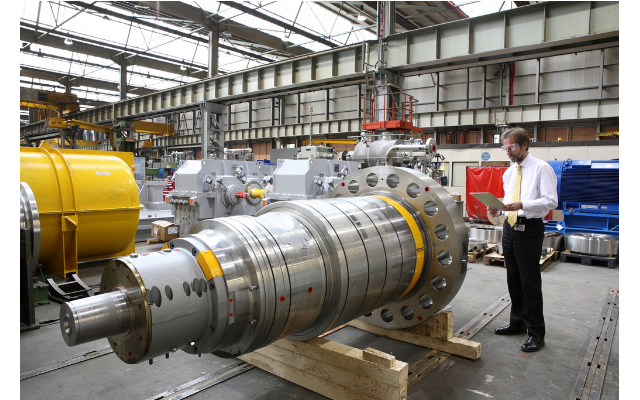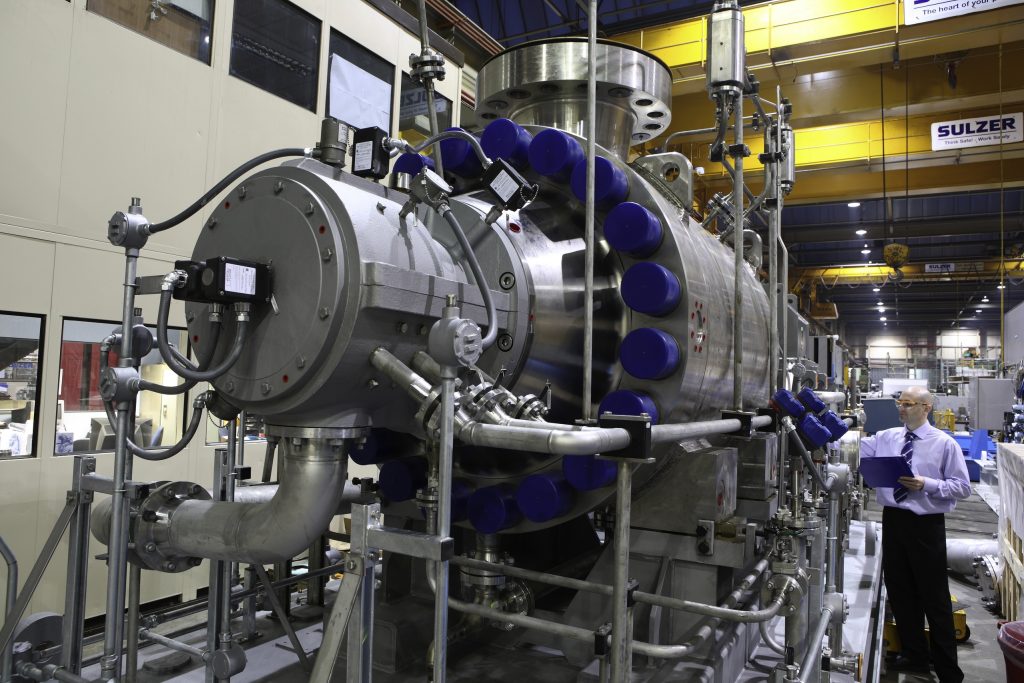Contributor: Sulzer
Optimizing pump reliability and performance
The offshore industry faces two main challenges: maximizing production within the limits of the reservoir, and minimizing operational costs while maintaining the safety of the platform. Pumps form one of the main groups of equipment that influence the outcome of both challenges and they require expert knowledge to ensure continued reliability and performance.
Murray Wilson, Sulzer UK argues that in each case, industry engineering expertise and commercial innovation are required to deliver these goals. Furthermore, the capital expenditure to improve reliability is most often far outweighed by the costs incurred by an unexpected failure and the subsequent costs of lost production. By taking a proactive approach and involving an expert maintenance provider, platform operators can deliver significant benefits to the business in the long term.
Improving performance
In the years following commissioning, the actual duty requirements of production pumps are likely to change – production rates may start to decline after the initial plateau period or the connection of additional wells may mean that potential production is being limited by the processing trains which were designed for lower volumes.
As equipment is pushed to operate significantly outside of its original design envelope, this can often cause operating problems which impact reliability and ultimately affect platform production. This also results in increased maintenance costs as operators and equipment specialists are required to overhaul plant more frequently.
Ultimately, the goal is to improve reliability and efficiency while reducing downtime and energy consumption, at the same time as satisfying API, ATEX, and many other engineering standards. However, this seemingly impossible task can be achieved through the implementation of preventative maintenance techniques and the adoption of the latest engineering designs for pumps.
Water injection pumps, seawater lift pumps, crude oil offloading pumps and fire suppression systems all require individual designs to deliver the best efficiency and productivity. At the same time, they also need specialist maintenance routines that will prolong reliability and effectiveness.
Proactive maintenance
A proactive maintenance regime is crucial to identifying potential issues before they develop into problems. However, this requires knowledgeable and experienced personnel to carry out the in-situ platform maintenance and these skills take time to perfect. The time required for this process can be greatly reduced by instigating a training program prepared by experts in equipment maintenance, who can pass on their collective knowledge in a structured and efficient manner.
In terms of through-life maintenance cost, preventative action is almost always less costly than corrective action, and adopting a carefully managed, proactive regime is crucial to identifying potential issues before they develop into problems. Two of the most prominent symptoms that occur prior to failure in mechanical and electrical equipment are increasing vibration and rising operational temperature.
Regular trending and analysis of radial and axial vibration signatures and thermographic / visual inspections of bearings, coils and electrical connections can prove invaluable. The latest developments in operational monitoring can be applied to existing assets and then used to determine the optimal point at which planned maintenance should be conducted.
Understanding cavitation
Most commonly seen on the pump impeller, cavitation is caused by a pressure difference, either on the pump body or the impeller. A sudden pressure drop in the fluid causes the liquid to flash to vapor when the local pressure falls below the saturation pressure for the fluid being pumped. Any vapor bubbles formed by the pressure drop are swept along the impeller vanes by the flow of the fluid. When the bubbles enter a region where the local pressure is greater than saturation pressure, the vapor bubbles abruptly collapse, creating a shockwave that, over time, can cause significant damage to the impeller vanes or pump housing.
In most cases it is better to prevent cavitation rather than trying to reduce the effects on the pumping equipment. This is normally achieved by one of the three actions:
- Increase the suction head
- Lower the fluid temperature
- Decrease the Net Positive Suction Head Required (NPSHR)
For situations where cavitation is unavoidable, or the pumping system suffers from internal recirculation or excessive turbulence, it may be necessary to review the pump design or minimize the potential for damage using a bespoke coating system.
Tackling erosion
The offshore production environment exposes pumps to harsh operating conditions and the abrasive nature of the fluids being pumped in certain processes on board can ultimately result in reduced efficiency and decreased pump performance.
Produced Water Re-injection pumps that are employed to force water back into the oil field and thus maintain the reservoir pressure needed to lift the oil to the surface are often subjected to high levels abrasion. This is commonly the result of sand carryover from upstream filtration where there has been a process upset or where filtration systems are not adequate. Pumps that are used to transfer these fluids can experience significant levels of erosion, especially in areas with high flow velocities. The entrained sand particles act as an abrasive and higher working pressures only serve to compound the issue.
Pump manufacturers will aim to minimize flow velocities throughout the pump or design it in such a way that the flow velocities through close-running clearances are as low as practically possible within the duty for which the product has been designed. Under these circumstances, one of the most effective solutions is the use of specialist protective coatings, which can be used to protect selected areas in the pump.
Delivering the best coating system
With so many benefits arising from a specialist coating, it is important to determine the most appropriate materials, equipment and application procedures, otherwise the coating may degrade and fail prematurely. The processes and specifications used by companies such as Sulzer for applying coatings have been developed over many years and are essential to delivering a durable and reliable product.
To illustrate the importance of these procedures, especially in pump applications, consider the process of installing and removing an impeller. In many situations, the impeller is heated to allow it to be installed or removed from the drive shaft. This shrink-fit procedure can cause inappropriate coatings to be damaged during a routine maintenance operation. Sulzer has ensured that its coating technologies can withstand this thermal shock and continue to deliver long-lasting corrosion protection.
The importance of engineering expertise should not be underestimated and the benefits of engaging an experienced and well-resourced pump engineering company should not be overlooked. When dealing with complex engineering design, as seen in many pumping applications, it is very important to select to most effective and efficient resources to deliver a repair or refurbishment.
Meeting the logistical challenge
When it comes to complex equipment such as the large pumps encountered on offshore platforms, the most efficient delivery of maintenance will come from a provider of turnkey rotating equipment solutions. These organizations should have the necessary service facilities, trained & competent staff, logistical support and the service culture needed to support production critical plant.
In an ideal world, all the maintenance would be carefully planned and managed, but often it is necessary to respond to a situation immediately and deliver technical support, equipment and materials at a moment’s notice. With a global network of service centers, capable of designing and manufacturing custom parts, Sulzer has not only the expertise, but also the facilities and resources to meet the challenges faced by the offshore industry.
As a world leading pump manufacturer, Sulzer offers state-of-the-art design and manufacturing facilities for oil and gas production, including subsea applications. This expertise is transferred throughout the company and used to support the maintenance and repair of any type of pumping asset.
Take a Tour through the Sulzer Turbo Services Houston Service Center





